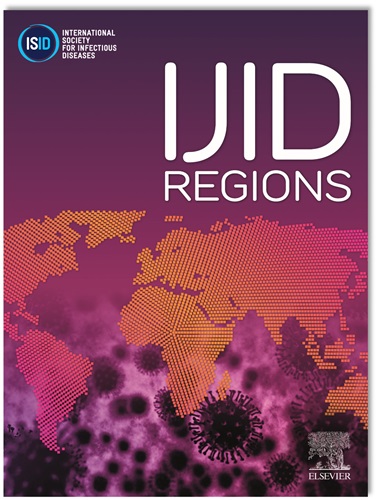A disease suppression strategy in action: The impact of non-pharmaceutical interventions in the COVID-19 pandemic in Denmark
IF 4.3
2区 医学
Q1 INFECTIOUS DISEASES
引用次数: 0
Abstract
When a new pandemic virus emerges in a naive population, the only control options are non-pharmaceutical interventions (NPIs) until vaccines or effective treatments become available. Here, we report on the Danish suppression strategy and use of a combination of NPIs with a notable absence of extremely strict measures (such as stay-at-home orders). Only 7% of Danes were infected (serological evidence) in the first year of the pandemic, compared with 50% in Lombardy in the first wave alone. This low attack rate was accomplished by initial rapid intervention with a free-of-charge mass testing program beginning in October 2020, a strong digital data infrastructure, timely contact tracing and voluntary home isolation, real-time reporting of surveillance data, and a high degree of public trust. The individual contribution of each NPI to the pandemic control is difficult to assess; yet, evidence points to the mass testing program as being particularly effective in removing infected individuals from the pool. In January 2021, vaccines became available, and 96% of Danes over 50 years of age were vaccinated twice with an mRNA vaccine by summer. On February 1, 2022, while facing the Omicron variant and with the older adult newly boosted, Denmark became the first country to drop all NPIs. A few months later, 70% of the population had been infected with the Omicron variant, showing the SARS-CoV-2 transmission potential when unmitigated. Denmark was only close to intensive care unit capacity during the second wave in winter 2020-2021, when 5% of the population was infected. In conclusion, the effectiveness of the combined NPIs is evident due to the low (<10%) attack rate in the first two waves before vaccines became available, far from the experience of unmitigated COVID-19 in Lombardy in spring 2020, with a 50% attack rate and catastropic levels of severe morbidity and mortality.
实施中的疾病抑制策略:非药物干预措施对丹麦COVID-19大流行的影响
当一种新的大流行病毒在幼稚人群中出现时,唯一的控制选择是非药物干预措施,即NPI,直到获得疫苗或有效的治疗方法。在这里,我们报告了丹麦的镇压策略和NPI的组合使用,明显缺乏极端严格的措施(如呆在家里的命令)。在大流行的第一年,只有7%的人被感染(血清学证据),而伦巴第仅在第一波中就有50%的人被感染。实现这一低发病率的原因包括:从2020年10月开始实施的免费大规模检测计划、强大的数字数据基础设施、及时追踪接触者和 自愿居家隔离、实时报告监测数据以及公众的高度信任。难以评估每个国家对大流行控制的个人贡献;然而,有证据表明,大规模检测项目在将感染者从池中清除方面特别有效。2021年1月,疫苗开始可用,到夏季,96%的50岁以上丹麦人接种了两次mRNA疫苗。2022年2月1日,在面对欧米克隆变体和老年人新增加的情况下,丹麦成为第一个取消所有NPI的国家。几个月后,70%的人口感染了欧米克隆病毒,显示出未经缓解的SARS-CoV-2传播潜力。在2020年至2021年冬季的第二波疫情期间,丹麦仅接近重症监护病房的容量,当时有5%的人口被感染。总之,综合NPI的有效性是显而易见的,因为低(
本文章由计算机程序翻译,如有差异,请以英文原文为准。
求助全文
约1分钟内获得全文
求助全文
来源期刊
CiteScore
18.90
自引率
2.40%
发文量
1020
审稿时长
30 days
期刊介绍:
International Journal of Infectious Diseases (IJID)
Publisher: International Society for Infectious Diseases
Publication Frequency: Monthly
Type: Peer-reviewed, Open Access
Scope:
Publishes original clinical and laboratory-based research.
Reports clinical trials, reviews, and some case reports.
Focuses on epidemiology, clinical diagnosis, treatment, and control of infectious diseases.
Emphasizes diseases common in under-resourced countries.

 求助内容:
求助内容: 应助结果提醒方式:
应助结果提醒方式:


